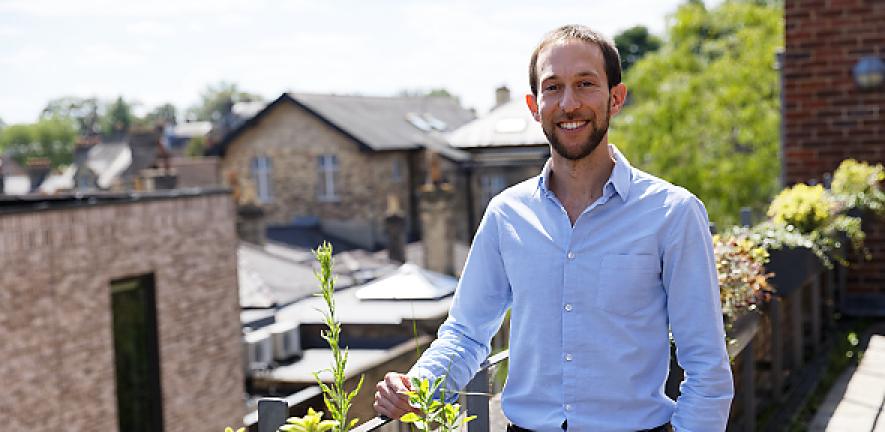
The researchers, based in the department’s Centre for Misfolding Diseases (CMD), outline the new approach in a paper on bioRxiv, an online preprint repository that allows researchers to share results and get feedback prior to the peer-review process.
A guided missile
The new system uses antibodies which bind to a specific site on the targeted protein. The antibody transports an attached ‘linker’ to the selected site, where it delivers a chemical payload which makes the desired modification.
One advantage of the new technique is that the payload has only a short-lived connection with the antibody and linker, and breaks away after it is delivered to the protein. The antibody and its attached linker are then cleared from the cell, which reduces the risk of adverse side effects.
First author Dr Oded Rimon, who started the project as a PhD student and is now a postdoctoral researcher in the Vendruscolo group, says: “The antibodies are essentially used like a guided missile – they find and bind the protein and deliver their payload, which reacts with the target to make the modification.”
Oded calls the system PEABS, which stands for Protein Editing with an Antibody-Based System. “All credit to my Dad, who came up with this acronym,” he says. “It’s a new approach to post-translational modification of proteins.”
Modifying proteins
Post-translational modifications (PTMs) of proteins are chemical modifications that regulate a broad range of cell behaviours. They occur naturally and can happen at any step in the life cycle of a protein. Scientists like Oded have long been interested in finding ways to make their own post-translational modifications of proteins as a potential way to prevent or cure disease.
But finding a way to modify naturally occurring proteins in a complex biological environment has proved to be very difficult, and this is the first time scientists have shown they can create a desired modification on proteins in their natural state.
Potential applications
Oded initially used Green Fluorescent Protein (GFP) in the research, a model protein that is easy to work with and exhibits green fluorescence when exposed to light. He has now moved on to more challenging proteins, and found the system continues to be effective.
“GFP is much simpler than a protein like amyloid beta, which aggregates in Alzheimer’s Disease, but the design still remains the same for other proteins we have tested, so I have very good reason to believe the system will work on many different targets,” he says.
Oded is confident that his system could eventually be used as a therapy in neurodegenerative diseases. He foresees a day when the system could be used to modify the amyloid beta protein so that it doesn’t aggregate, for example.
The research was uploaded to the preprint server so that others could review the system, provide feedback and even give input on further experimental data. Now that Oded has addressed the feedback and has shown the system is not specific to GFP, he plans to submit the paper for peer-review and publication.
Research
Oded Rimon, Juraj Konc, Vaidehi Roy Chowdhury, Gonçalo J. L. Bernardes, Michele Vendruscolo, Targeted protein editing with an antibody-based system, (2023) bioRxiv pre-print server.

